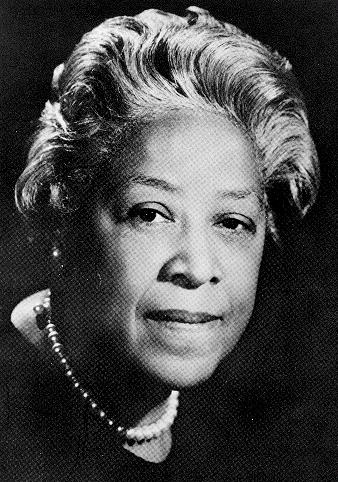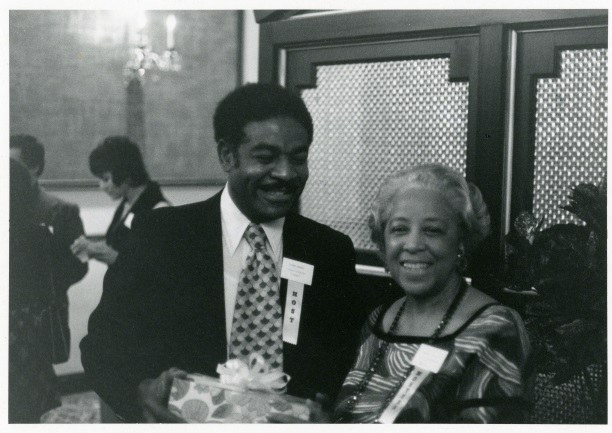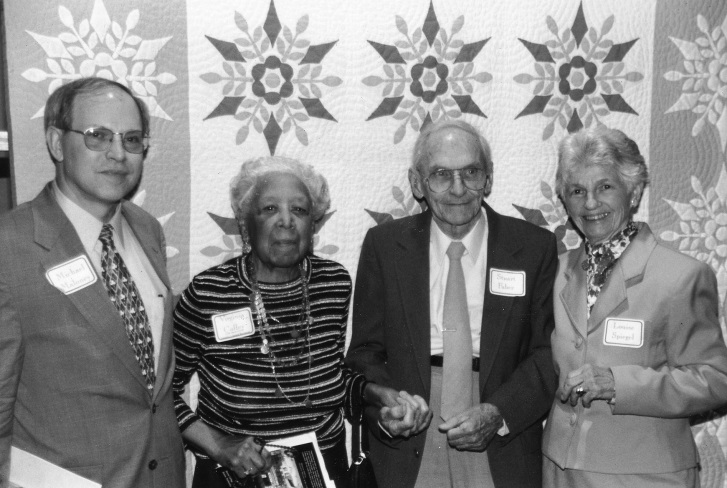In March 2019 Lydia’s House, a Catholic organization in Norwood with a mission to provide safe, stable and supportive housing for women and children in crisis, dedicated and blessed their new building named for Virginia Jones Coffey. I was honored to participate in the blessing ceremony as one of Mrs. Coffey’s friends. Others who also participated in the blessing included Arzell Nelson and Eric Kearney. Virginia Coffey House is a converted business building with apartments and a daycare center.
Virginia Coffey is an important figure in the history of the Urban Appalachian Council. Born in Wheeling, West Virginia, her family moved to Grand Rapids, Michigan where she grew up in a diverse neighborhood. Mrs. Coffey’s father was respected as a strong civil rights advocate in the city.
After graduating with an associate degree in teaching from what is now Western Michigan University she moved to Cincinnati to begin her teaching career at the all Black Harriet Beecher Stowe elementary school. She was fortunate to work under Jennie D. Porter who was the school principal. Later she took a position with the West End YWCA where she worked for fifteen years, eventually becoming executive director of the YWCA branch. She also completed a bachelor’s degree at the University of Cincinnati during this period.

After marrying William A. Coffey in 1941 she took a few years off. Mrs. Coffey was still active and soon became a leader at Mt. Carmel Presbyterian Church in organizing the first all-black Girl Scout troop in the city. Her work eventually led to a position with the Girl Scout’s organization. In 1948 Marshall Bragdon, Director of the Cincinnati Mayor’s Friendly Relations Committee (later to be renamed the Cincinnati Human Relations Commission) recruited Mrs. Coffey to be Assistant Director of the organization. Her impact was felt immediately. She began writing a newspaper column about human relations, was a featured speaker at several local and national locations, and was invited to be the first African American member of the prestigious Cincinnati Woman’s Club.
In 1973, after more than 14 years of service to the MFRC she resigned to work in neighborhood agencies. “I wanted to get out there with the populace,” she told a newspaper reporter. After working at two community agencies, including as Executive Director of the Memorial Community Center in Over the Rhine, Mrs. Coffey was recruited by the Board of the newly reorganized Cincinnati Human Relations Commission (CHRC) to be the Executive Director. It was in this role that she became a major advocate for Cincinnati’s Appalachian residents. She appointed Michael Maloney to be the Appalachian Specialist on her staff. Working with Maloney, Stuart Faber, Louise Spiegel, and Frank Foster she led the effort to establish the Appalachian Committee of CHRC. The committee was eventually spun off to be an independent affiliate to CHRC known as the Urban Appalachian Council.

Michael Maloney, UAC Executive Director, spoke about Mrs. Coffey:
In those times, it took courage for a black leader to give aid to the Appalachian community. Some saw us as unwashed white southerners, possibly associated with the Klan. A letter to the editor blamed Mrs. Coffey (we always called her that.) and me for bringing all those Blacks and Appalachians to their city. I remember her as kind, gracious, and tough as nails in the face of injustice. She and her successor, Thomas Garner, used CHRC funds to pay 2/3 of my salary the first five years of UAC’s founding period.
The Urban Appalachian Council became an important agency supporting and advocating for Cincinnati’s urban Appalachians. Without Virginia Jones Coffey it would not have been as successful in its mission. It is appropriate that the Virginia Coffey House was blessed for Mrs. Coffey was a true blessing to Cincinnati and its residents
(For more information about Mrs. Coffey see: “If the Situation Seemed Insurmountable, I Always Wanted to be There”: Virginia Coffey, A Midwest Human Relations Pioneer.” Phillip J. Obermiller and Thomas E. Wagner. Studies in Midwestern History, Volume 2, Number 4, 38-56, (February, 2016)
Tom Wagner has been involved with and supported the Urban Appalachian Council since its inception in the early 1970s. He was also instrumental in the establishment of the Appalachian Festival. Tom has coauthored four books about Appalachians with Phillip Obermiller and numerous articles with Phil and Mike Maloney. He is retired from the School of Planning at the University of Cincinnati where he was University Professor of Planning and Urban Studies.

